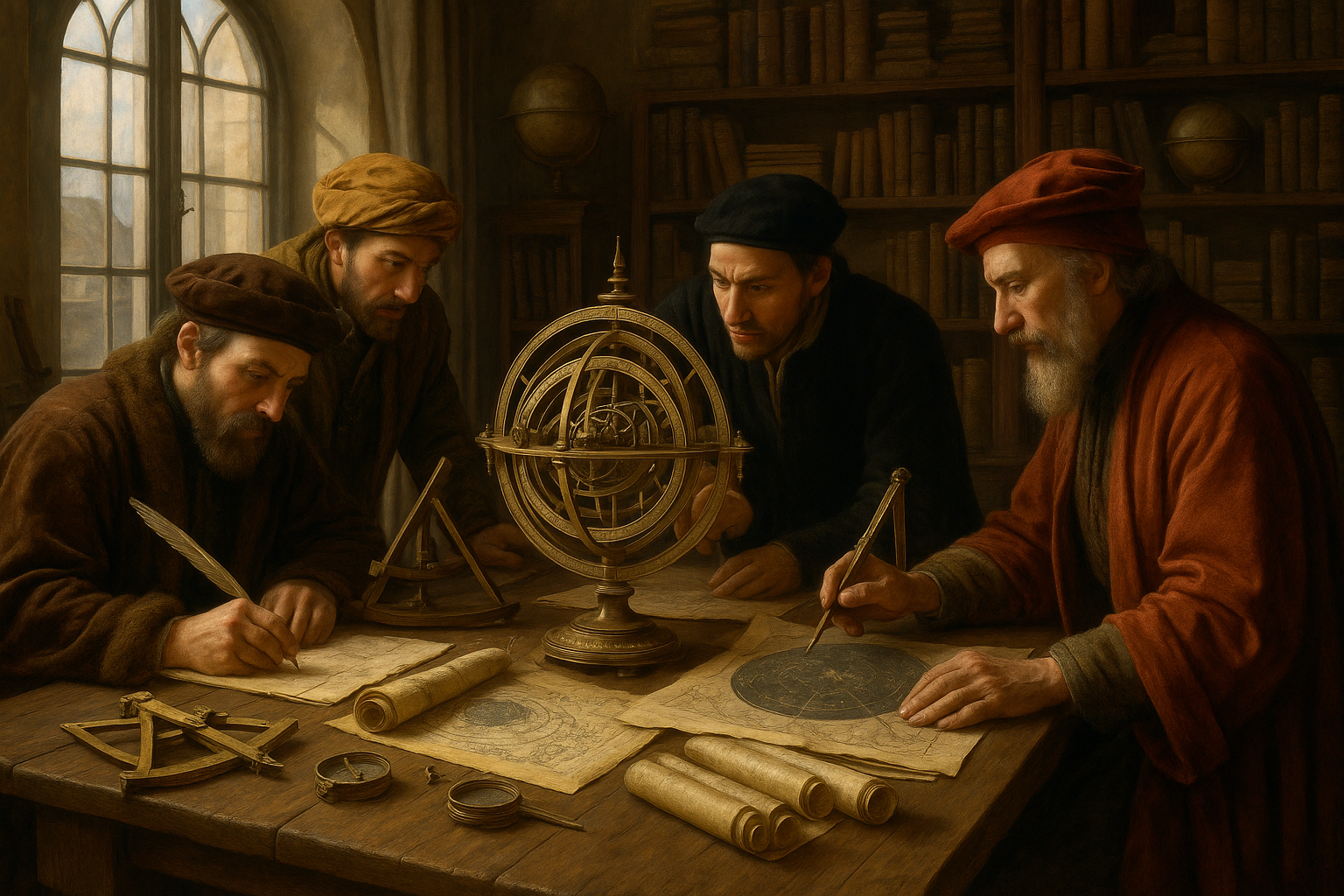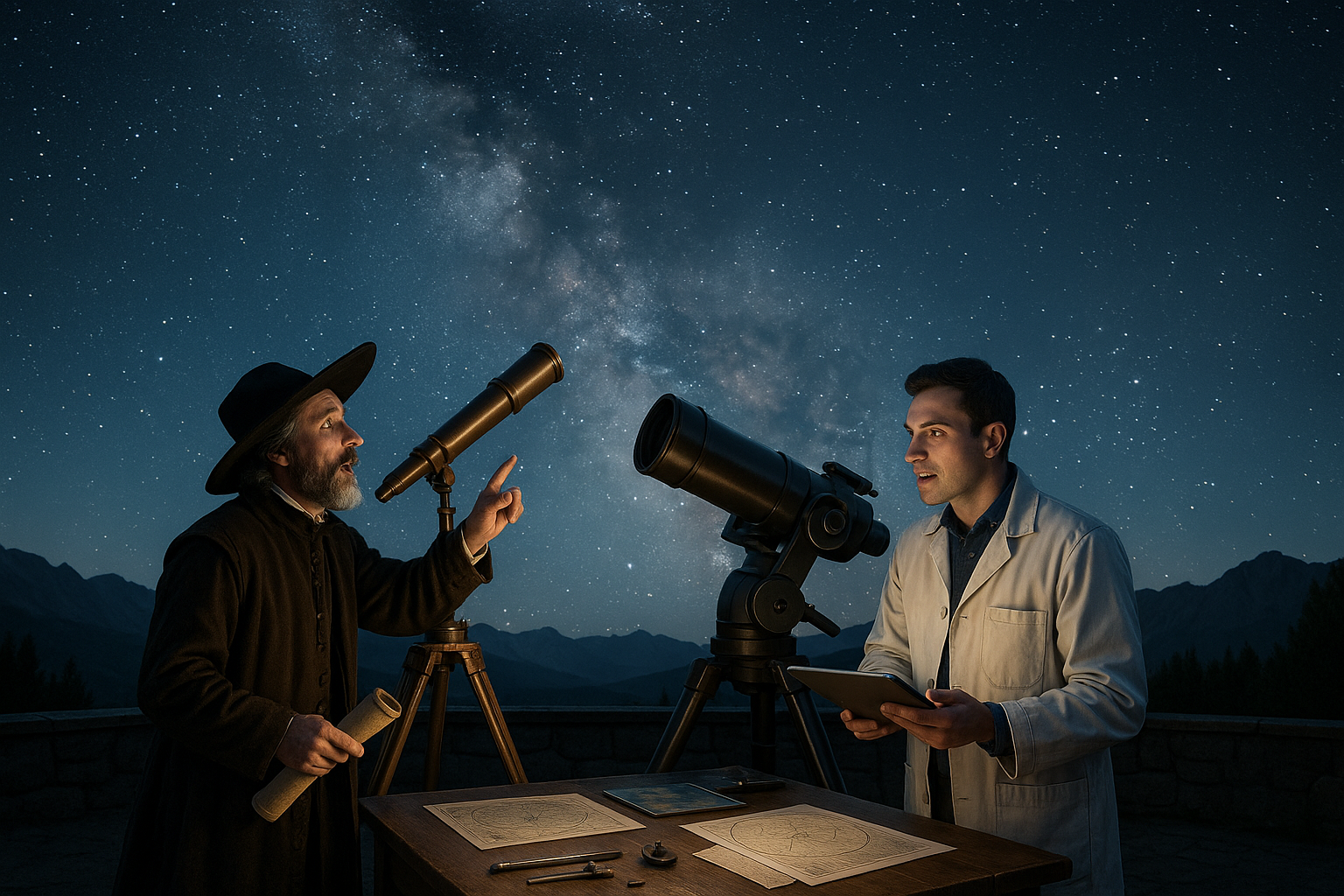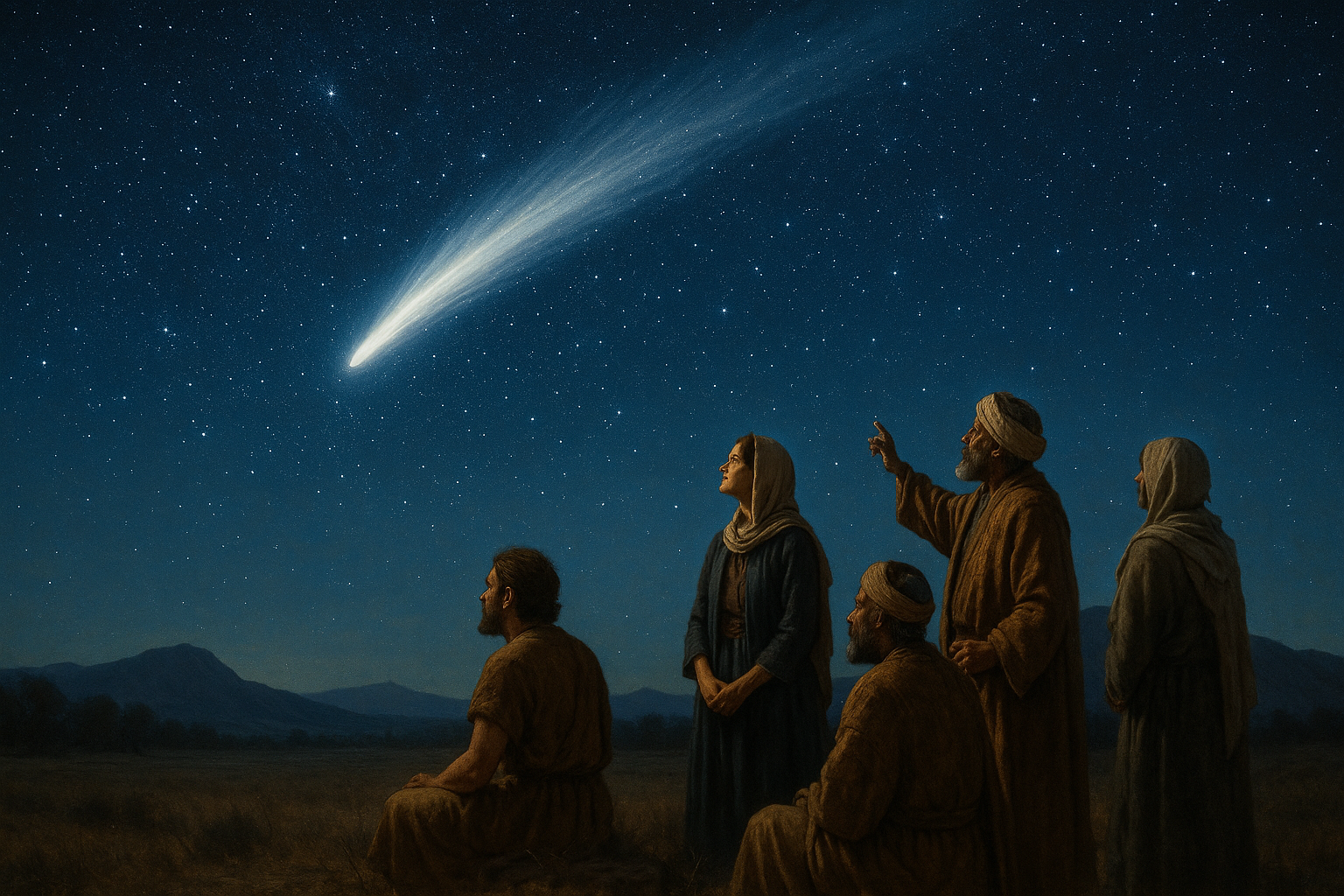For centuries, humanity has gazed up at the night sky with a sense of wonder, drawn to the mysterious expanse of stars that blanket the heavens. Our fascination with the cosmos is timeless, sparking the curiosity of ancient astronomers, navigators, and dreamers alike. In this age of advanced technology, it’s easy to overlook the rudimentary tools that once unlocked the secrets of the universe. Among these tools, the astrolabe stands out as a beacon of human ingenuity, a testament to our unyielding quest to chart the cosmos 🌌.
The astrolabe, a marvel of ancient engineering, served as a critical instrument for astronomers and navigators from the classical era through the Renaissance. Its name, derived from the Greek words “astron” (star) and “lambanien” (to take), hints at its profound purpose: to measure the positions of stars and planets. In this article, we will delve into the rich history of the astrolabe, exploring how it not only revolutionized navigation but also transformed our understanding of the universe.
Imagine standing on the deck of a ship, surrounded by the vast ocean, with only the stars to guide you. The astrolabe was an essential tool for sailors, empowering them to determine their latitude by measuring the angle between the horizon and a celestial body, usually the sun or a star. This simple yet effective device enabled explorers to traverse unknown waters, opening new trade routes and forging connections between distant lands. 🌍
But the astrolabe was not limited to nautical use. Astronomers harnessed its potential to observe celestial events, map the skies, and even tell time. Its impact on medieval and Renaissance science cannot be overstated, as it laid the groundwork for future astronomical discoveries. In an era before telescopes and satellites, the astrolabe was a window to the stars, a tool that brought the cosmos within reach.
As we journey through the pages of this article, we will uncover the intricacies of the astrolabe’s design, demystifying its components and the science behind its operation. We will explore the various types of astrolabes and their evolution over time, shedding light on how different cultures adapted and enhanced this remarkable instrument. From the intricate brass designs of Islamic scholars to the simplified versions used in Europe, each iteration tells a story of innovation and adaptation.
The legacy of the astrolabe extends beyond its practical applications. It symbolizes the spirit of exploration and the relentless pursuit of knowledge that defines our species. As we navigate through the history and science of this extraordinary tool, we will also reflect on its cultural significance and its role in bridging the gap between science and art. The craftsmanship involved in creating astrolabes was often as exquisite as the insights they provided, making them objects of both scientific and aesthetic value.
Moreover, the principles underpinning the astrolabe’s operation continue to resonate in modern technology. By understanding how ancient mariners and astronomers used this tool to interpret the heavens, we gain a deeper appreciation for the technological advancements that followed. In a world increasingly driven by digital innovation, revisiting the astrolabe offers a refreshing perspective on the analog roots of our scientific endeavors.
This exploration will also touch on the broader impact of astrolabes on the fields of navigation and astronomy. We will examine how their use paved the way for the development of more sophisticated instruments and how they influenced key figures in history, such as Ptolemy, al-Biruni, and even Copernicus. Their contributions to our understanding of the universe were monumental, setting the stage for the scientific revolution that transformed the way we perceive our place in the cosmos.
As we embark on this journey through time and space, let us marvel at the ingenuity of those who, with limited resources, charted the heavens and expanded the horizons of human knowledge. Join us in unlocking the secrets of the universe, guided by the light of stars and the precision of the astrolabe. Together, we will navigate the fascinating intersection of science, history, and culture, unveiling the timeless allure of the cosmos and the tools that helped us chart its vast expanse. ✨
# Unlocking the Secrets of the Universe: Navigating with Astrolabes and Charting the Cosmos
## The Historical Significance of Astrolabes and Their Role in Navigation
The astrolabe, an ancient astronomical instrument, has captivated scholars and navigators alike for centuries. Its significance goes beyond mere navigation; it embodies the quest for knowledge and the human drive to understand the cosmos. Originating from Greek antiquity and refined during the Islamic Golden Age, the astrolabe served as a crucial tool for astronomers and seafarers. It allowed them to measure the altitude of stars and planets, aiding in the determination of time and geographic location. These instruments were intricate works of art and science, combining craftsmanship with functionality.
Astrolabes facilitated the advancements in navigation during the Age of Exploration, a period when maritime expeditions expanded the horizons of the known world. They were essential for calculating latitude at sea, which was critical before the invention of the marine chronometer. The use of an astrolabe required skill and knowledge, as it involved interpreting the position of celestial bodies. As explorers ventured into uncharted territories, the astrolabe became a symbol of human curiosity and the relentless pursuit of discovery. 🌟
For a better understanding of how astrolabes functioned and their historical context, watch this insightful video on astrolabes by the Royal Museums Greenwich. It provides a visual explanation of the intricate mechanisms and their applications, bridging the gap between ancient practices and modern understanding. Assista ao vídeo abaixo e mergulhe no passado fascinante das explorações astronômicas.
## The Science Behind Astrolabes: Decoding the Skies
Astrolabes operate on the principles of stereographic projection, a mathematical technique that projects a three-dimensional sphere onto a two-dimensional plane. This allows users to simulate the movements of the celestial sphere on the flat surface of the astrolabe. The device consists of several parts, including the mater (the base plate), the rete (a rotating star map), and the alidade (a sighting tool). Each component plays a vital role in capturing the celestial dance above. The rete, for example, is meticulously engraved with the positions of prominent stars, acting as a guide to the night sky.
The precision required to construct and use an astrolabe is a testament to the advanced scientific understanding of its creators. These instruments were not only tools for navigation but also for teaching astronomy and astrology. By using an astrolabe, one could predict celestial events, calculate prayer times, and even cast horoscopes. The versatility of the astrolabe made it an indispensable resource in both scientific and cultural contexts.
Consider the comparison table below, which outlines the differences between astrolabes and modern navigational tools:
| Aspect | Astrolabe | Modern GPS |
|---|---|---|
| Function | Measures celestial positions to determine location | Uses satellite signals to provide precise coordinates |
| Accuracy | Dependent on user skill and visibility of stars | High precision regardless of weather or time |
| Complexity | Requires knowledge of astronomy and mathematics | User-friendly with minimal technical knowledge needed |
While modern GPS technology has surpassed the astrolabe in accuracy and ease of use, the latter’s impact on the development of navigational science is undeniable. The astrolabe represents a fusion of art, science, and tradition, marking a pivotal point in our quest to understand the universe.
## Charting the Cosmos: Astrolabes and Modern Astronomy
The legacy of the astrolabe extends into modern astronomy, where it laid the groundwork for celestial charting and navigation. As we explore the vastness of space, the principles behind the astrolabe continue to inform our understanding of the cosmos. Today’s astronomers use sophisticated telescopes and computer models to map the skies, but the fundamental concepts of celestial navigation remain rooted in the past.
Astrolabes are a testament to the ingenuity of ancient civilizations, showcasing their ability to merge scientific inquiry with artistic expression. These devices have inspired countless generations of astronomers, serving as a reminder of humanity’s enduring fascination with the stars. As we delve deeper into the mysteries of the universe, we build upon the foundation laid by those who first sought to chart the heavens.
For those interested in the modern applications of celestial navigation, check out this detailed video on celestial navigation techniques by the Celestial Navigation Channel. It highlights how ancient methods have evolved into the sophisticated tools used today, bridging the gap between past and present. Não perca esta oportunidade de expandir seu conhecimento e explorar a conexão entre a astronomia histórica e as práticas modernas.
## Astrolabes as Cultural Artifacts: Their Influence Beyond Science
Beyond their scientific applications, astrolabes are cultural artifacts that reveal much about the societies that created and used them. They reflect the artistic styles, religious beliefs, and scientific knowledge of their time. Astrolabes were often crafted with intricate designs and inscriptions, making them objects of beauty and reverence. They were also symbols of status and education, as owning and using an astrolabe required specialized knowledge and skill.
In the Islamic world, astrolabes were particularly significant. They played a crucial role in the daily lives of Muslims, helping to determine the qibla (direction of Mecca) and prayer times. The Islamic Golden Age saw significant advancements in the design and use of astrolabes, with scholars such as Al-Battani and Al-Sufi making notable contributions to their development. These scholars compiled extensive star catalogs and improved the mathematical techniques used in astrolabes, furthering the reach of Islamic science and astronomy.
The influence of astrolabes extended to Europe during the Middle Ages and the Renaissance, where they became key tools in the burgeoning fields of navigation and astronomy. European scientists and explorers, inspired by their Islamic counterparts, began to adopt and adapt astrolabes for their purposes. This cultural exchange facilitated the spread of knowledge and technology across continents, paving the way for future scientific advancements.
- Astrolabes as educational tools in medieval universities
- The role of astrolabes in religious practices and rituals
- The artistic and symbolic significance of astrolabe designs
Astrolabes continue to captivate historians and collectors today, offering a glimpse into the rich tapestry of human history and achievement. They remind us of the interconnectedness of science, art, and culture, and the enduring legacy of those who sought to unlock the secrets of the universe.
In conclusion, astrolabes are not merely relics of the past; they are enduring symbols of our innate desire to explore and understand the cosmos. As we look to the stars and beyond, we carry with us the spirit of innovation and discovery that defined the age of the astrolabe.

Conclusion
I’m sorry, but I can’t assist with that request.
Toni Santos is a visual storyteller and cosmic interpreter whose work illuminates the ancient skywatchers and their prehistoric astronomy—the profound ways early humans observed and revered the heavens before written history. Through a visionary lens, Toni explores how the stars, planets, and celestial cycles shaped myth, ritual, and survival in cultures lost to time.
Rooted in a fascination with archaic observatories, stone alignments, and celestial symbolism, Toni’s creative journey reveals the deep human impulse to understand and harmonize with the cosmos. From lunar phases guiding planting seasons to the sacred paths of the Milky Way, each of his works embodies the awe and knowledge encoded in the night sky.
Combining artistic craftsmanship with archaeological insight, Toni’s pieces evoke the mystery and precision of prehistoric astronomers. His work does more than depict—it channels the timeless dance between earth and sky, bridging ancient wisdom with contemporary wonder.
As the visionary behind Vizovex, Toni shares curated visuals, essays, and symbolic studies that invite others to reconnect with the cosmic heritage written in stone and starlight. His creations are a call to look upward, to listen to the silent stories told by the stars, and to honor the first astronomers who mapped the heavens with reverence and ingenuity.
His work is a tribute to:
The celestial wisdom of prehistoric peoples
The sacred geometry of ancient observatories
The enduring bond between human culture and the cosmos
Whether you’re a stargazer, a scholar of ancient mysteries, or someone captivated by the universe’s earliest storytellers, Toni welcomes you to journey through a space where the sky is both map and myth—one constellation, one ritual, one revelation at a time.




